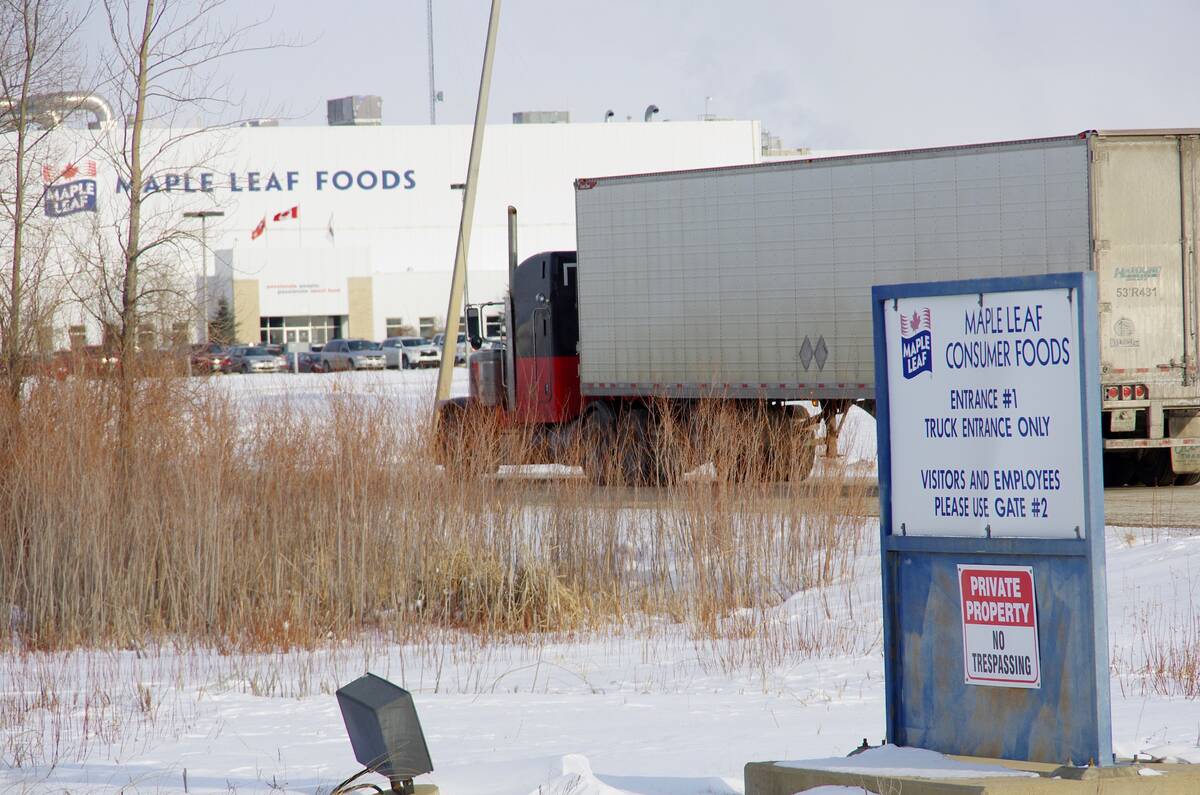Under construction | Trucks unloading every two minutes
JANSEN, Sask. — The main grid road between the communities of Jansen and LeRoy has taken a pounding.
Thirty thousand loads of gravel are being transported about 30 kilometres from the Watrous area to the site where BHP Billiton intends to build the largest potash mine in the world. To meet its deadlines, the company says a truck must unload every two minutes over a 12-hour shift.
More than one million cubic metres of aggregate will be moved and there is no doubt the road will have to be rebuilt.
Read Also

Manitoba pork exports gain new market ground
Manitoba’s pork trade pivoted from China over the last five years, while Japan is remains the largest customer and South Korea and Mexico market footholds have grown
Rural municipal councils are used to dealing with road maintenance and construction, but this is in a league of its own.
At both BHP’s Jansen project and K+S Potash Canada’s Legacy project farther south, road work and increased traffic are major issues in rural areas not accustomed to so much activity.
Roads are being closed and built, some gravel roads will be paved and some, like the Jansen-LeRoy grid, will include a bit of everything. Part of that road will be closed completely because it runs through the proposed mine site.
A mine’s infrastructure requirements are huge. At the Jansen project, the plan calls for new paved mine access roads off Highways 5, 6 and 16, two overpasses and a Canadian Pacific Railway line linking the mine to the existing line at Jansen.
The work is done to accommodate the mines, but the tenders must run through the municipalities.
“We’ve tendered out about 24, 25 miles of road for improvements or upgrades last year and this year,” said Rodney Audette, administrator in the RM of Dufferin where the Legacy mine is under construction.
The number is similar in the RMs of LeRoy and Prairie Rose.
The mining companies pay for the work, but the scale of construction and paperwork involved dwarf a typical construction year for RMs.
Andrew Svenson, legal counsel for the Saskatchewan Association of Rural Municipalities, said increased truck traffic is the immediate impact on municipalities, and road maintenance agreements are critical.
These agreements are set up to compensate municipalities for short-term heavy hauls that lead to extra maintenance requirements. However, the rates are supposed to be levied for incremental damage caused by the hauler and were last updated in 1998.
“We used that as our model, but that doesn’t work for this type of haul,” said Prairie Rose reeve Bruce Elke, whose municipality is bearing the brunt of the Jansen haul.
Jerry McGrath, reeve in neighbouring LeRoy, said the maintenance agreement wouldn’t come close to replacing the road, but a road construction agreement with BHP does.
Chris Ryder, vice-president of external affairs at BHP, said that’s only fair.
“If there is a one-off cost in addition to regular maintenance as a result of the heavy use, then we’ll fund those as well,” he said.
“We have to move a road. The RM is responsible for building and maintaining that road, but of course we’ll fund construction.”
The company will also pay for some dust control and compensate for broken windshields caused by the increased number of trucks on the road.
“The fact is that we’ll listen to those complaints,” Ryder said. “We’ll do everything we can to make sure that stuff doesn’t happen.”
There haven’t been many complaints, say RM officials, but concerns have been expressed about safety.
Elke said the company has been quick to address those concerns, such as making sure loads are tarped or that large construction lights aren’t shining in drivers’ eyes.
“If you can prove there’s a need, they’ve been very good to work with,” he said.
Svenson said the RMs made a good move when they established their maintenance agreement solely with BHP and made the company responsible to control the individual haulers it hires.
“It’s good to have this in place immediately,” said Svenson during last fall’s SARM convention. “You don’t have to nail down each hauler.”
He said the agreement included a schedule that dealt with how BHP would track trucks, weights, times and routes and report to the RM. Monthly payments also allowed the RM to monitor the traffic regularly.
Audette said formal agreements save a lot of hassle, and he recommended that any municipality facing such an increase in traffic follow the proper protocol.














